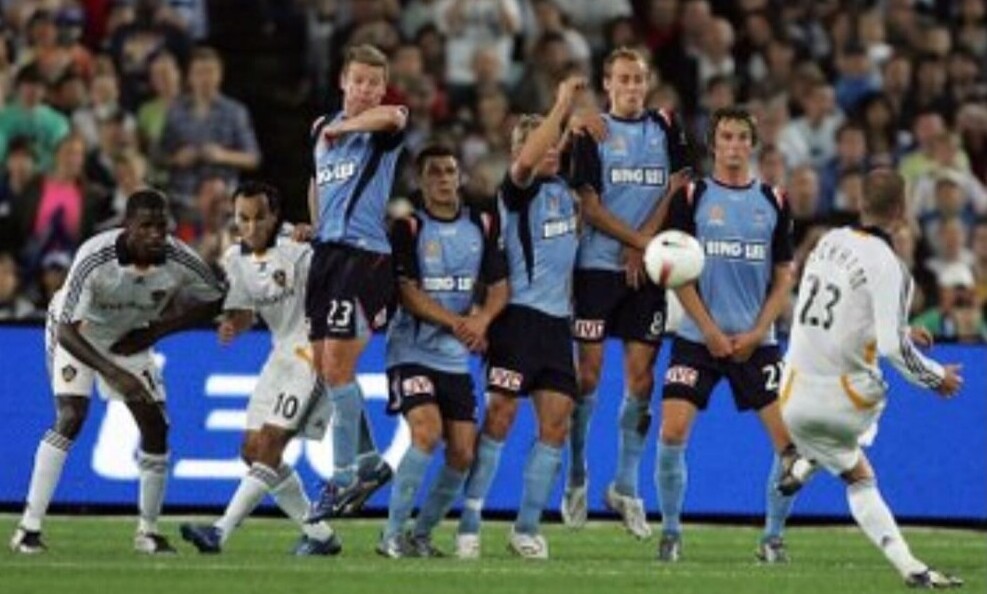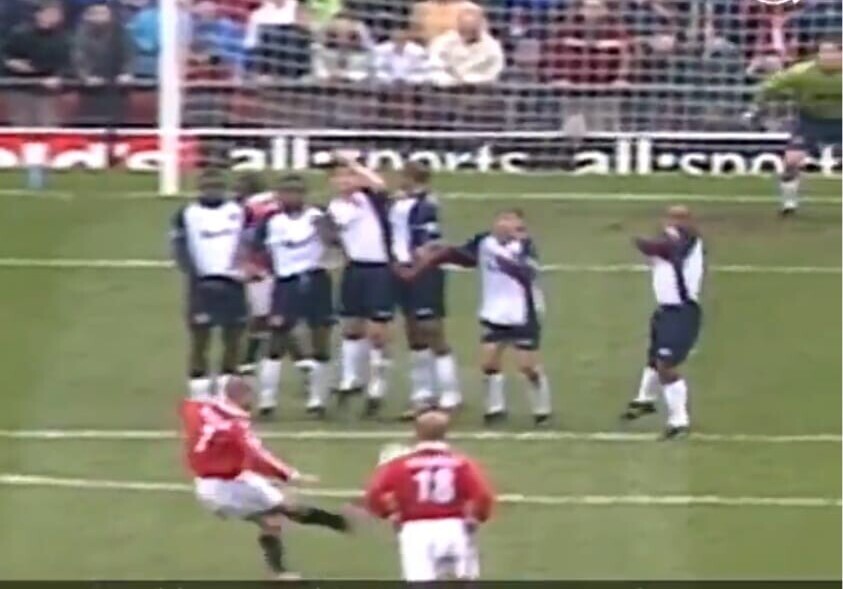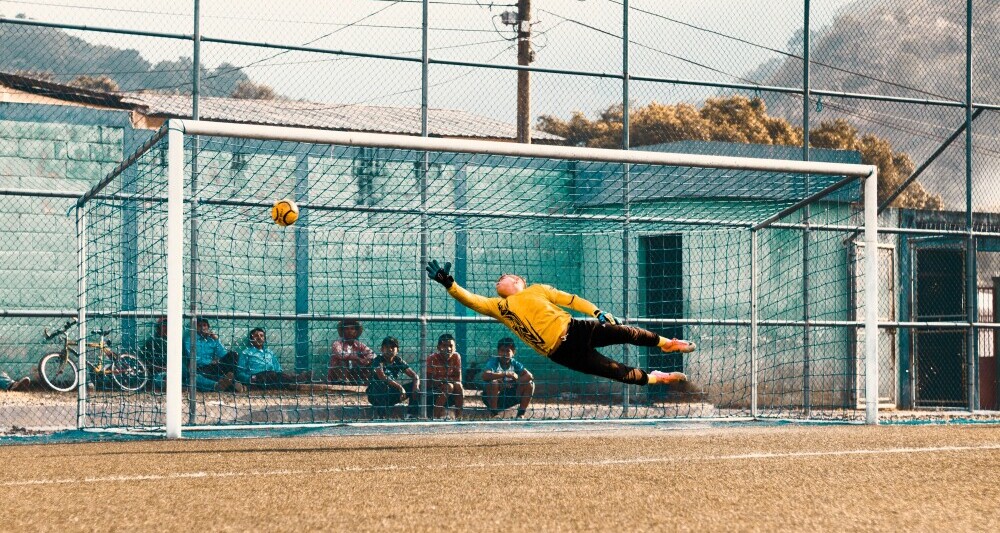A direct free kick has this special place in soccer where a single moment can flip the game.
It’s awarded when a defensive player fouls an attacker in dangerous areas outside the penalty box.
You have the freedom to go straight for the goal without the pesky wall of indirect-kick rules.
What makes these kicks totally game-changing is the element of surprise they carry.
Get a free kick awarded and suddenly, the defenders are backing up, the goalkeeper’s on edge, and your team is watching with bated breath for what unfolds.
It’s high pressure, sure, but also a moment loaded with potential glory.
Knowing the rules is your power play.
The ball has to be stationary before you whack it, and at least 10 yards away from every defender.
No dribbling or double touches—you got to nail it in one smooth go. And when it’s a direct free kick, you can head straight for goal, unlike indirect kicks where the ball has to be touched again by a teammate.
Being given the chance for a direct free kick is like being dealt a wild card in a game.
Winning one doesn’t just mean a chance for a great shot—it shifts the momentum in your favor, puts the pressure on the other team, and tells everyone on the field that your team is on the offensive.
Knowing what we just talked about sets you up to make the most of these opportunities as they arise.
Analyzing the Wall Formation: Your First Step
Defensive walls can feel like a big, moving puzzle, but understanding them is your first step to launching a killer direct free kick.
When defenders line up, their goal is to block your path to the net, making your job a bit more challenging.
The first thing you want to do is get a read on that wall. Look for gaps, spaces where the ball might sneak through.
Some walls are built like fortresses, while others have tiny openings, and that’s where your eagle-eye comes in handy.
The next part?
Understand their weak spots. Not every player stands tall with perfect posture.
Some might jump, some might not, and there’s usually a vulnerability near the ground or between players.
By analyzing their setup, you know exactly where to aim.
Then, think tactics.
Based on how the wall is set, decide whether to go high, low, or curve around.
Sometimes a lofted shot over the wall can be the ticket. Other times, a low drive that skims the grass is the smarter choice.
Your decision here can baffle the defense, especially when they expect one thing and you give them another.
Use the wall’s positioning against them. If they’re clustered tightly, curving the ball around can leave the keeper scrambling.
If they spread wide, consider punching it through a narrow space. Adapting to the wall’s setup shifts the odds in your favor.
It’s all about turning their defense into your scoring opportunity.
By studying the wall formation intensely and planning your moves accordingly, you boost your chance of getting the ball into the goal.
Body Positioning and Stance: Key Elements to Master
Getting your body position right is just as crucial as reading the field.
Stand a few steps back from the ball, feet apart at shoulder width. This sets up your balance and lets you strike naturally.
Your body should lean slightly forward just before the kick. This controls power and keeps your shot low, perfect for those sneaky under-the-wall kicks.
But a slight backward lean gives the ball a lift, ideal when targeting the top corner.
Place your non-kicking foot close to the ball, slightly ahead.
Don’t overcrowd it; this helps direct where your shot heads. Finding that sweet spot is key to sending the ball exactly where you want it.
Different stances can change the whole vibe of your kick. A straight run-up works if you’re going for power.
For spin, approach the ball at an angle. Each style has its own moments and fits with different game plans.
The angle of your kick impacts everything.
If you’re tilting towards the ball, you’re setting it for an inside curve. If you’re more upright, expect a cleaner, powerful hit straight to goal.
Practice these positions and stances until they feel like second nature. Body mechanics can turn a simple strike into a memorable moment on the field.
Mastering the Art of Ball Placement
Where you place the ball decides how it behaves once you kick it. By tweaking the ball’s position, you can add some wicked spin or go for straightforward power.
Consider the weather and field conditions before placing your ball.
On windy days, slightly adjusting your positioning can help stabilize its path.
A wet or slippery field could mean being extra precise with where you put the ball to avoid slips.
Ball placement affects how the ball spins and curves.
Position it slightly inward to get that curve going around the wall; hit it dead center for a powerful shot with less movement.
Think about where to focus your aim—going for the near post when the ball’s placed outward helps change the angle and surprise the goalie, potentially catching them off-guard.
Pay attention when you want to prioritize power versus precision. Go for a direct hit when power is more important, but if accuracy tops the list, place the ball to favor spin and control.
Don’t forget to use your ability to fake. Sometimes just a little adjustment before the kick can mislead both the defense and the keeper, making them think they know your move.
Reading the Goalkeeper: Gaining the Upper Hand
Scoring a direct free kick often comes down to outsmarting the goalkeeper. Spotting their tendencies will give you a big edge.
Keep an eye on how they react during corner kicks or similar set pieces. Some might have a predictable pattern in their positioning, while others might shift depending on your stance or the wall’s coverage.
Gauge the goalie’s starting position. If they’re more off-center, it might open up space for a direct shot to the opposite side.
Learning to spot this could mean the difference between a miss and a perfect goal.
Use fake shots to your advantage. By pretending to shoot, you might draw a premature reaction, clearing the way for your real shot.
Psychologically pressuring the keeper can also be handy. Taking your time to set up and eye them as you do can increase their anxiety and lead to mistakes.
If possible, review tapes from previous games. Understanding their usual responses to free kicks opens up new strategies for you.
Practicing Under Pressure: Building Confidence and Skill
Nailing a direct free kick during a match means being cool as a cucumber under pressure, and that only comes from practice.
Working under high-stakes settings can help mimic the intensity of real game scenarios.
Practice shots with teammates creating a realistic wall and a keeper in goal, making every effort feel like game day.
Focused repetition is your best friend here. Try placing the ball in different spots with varying targets to expand your range and confidence in all scenarios.
Drills focusing on maintaining form under stress—a few sprints before a kick, perhaps—can simulate fatigue and keep your mechanics sharp when it counts the most.
Visualizing success before each kick is a handy mental trick. Picture the path of your shot and the net billowing with your scored goal.
This mental rehearsal can boost both performance and confidence.
It’s crucial to learn from each shot, logging what worked, figuring out what didn’t, and adjusting. Over time, this reflection transforms anxiety into instincts.
Keeping composure in tense moments defines the true skill of a free kick master.
Practice is the playground where you build these habits until they feel second nature.
Happy soccer season!!!!!!!!!!!
” Here’s a little transparency: Our website contains affiliate links. This means if you click and make a purchase, we may receive a small commission. Don’t worry, there’s no extra cost to you. It’s a simple way you can support our mission to bring you quality content.”





4 Responses
Positioning yourself properly for a free kick comes with lots of practice and watching the players in the wall and the goalie. If you have the ability of studying game film you should be able to gain an advantage. You will be able to identify trends and tendencies of the other players giving you the advantage and making it easier to score.
Jerry
Hi Jerry,
That’s an excellent point!
Studying game film is a powerful tool for improving free-kick execution. Noticing how goalkeepers position themselves and how defenders react in the wall can definitely give players an edge.
It’s all about recognizing patterns and capitalizing on small details to increase scoring chances.
Do you have a favorite free-kick taker whose technique you admire? I’d love to hear your thoughts!
Best,
Raymond
Great breakdown of how mastering direct free kicks can be a real game-changer! It’s fascinating how something as simple as reading the wall formation or tweaking body positioning can completely shift the odds. Practicing under pressure and studying the goalkeeper’s tendencies really highlights the strategic depth involved. These moments truly test both skill and mental strength, turning an ordinary kick into a potential highlight-reel goal.
Hi Herman,
Thanks so much for your great comment.
I completely agree—direct free kicks are as much about strategy and mental composure as they are about technique.
Reading the wall, adjusting body positioning, and even studying the goalkeeper’s tendencies can give players a real edge in those high-pressure moments.
Practicing under game-like conditions is key, especially when it comes to handling nerves and making split-second decisions.
Some of the best free-kick takers in history, like Beckham and Pirlo, mastered this by constantly refining their approach.
Do you have a favorite free-kick specialist, or any personal tips that have worked for you? Would love to hear your thoughts!
Best,
Raymond